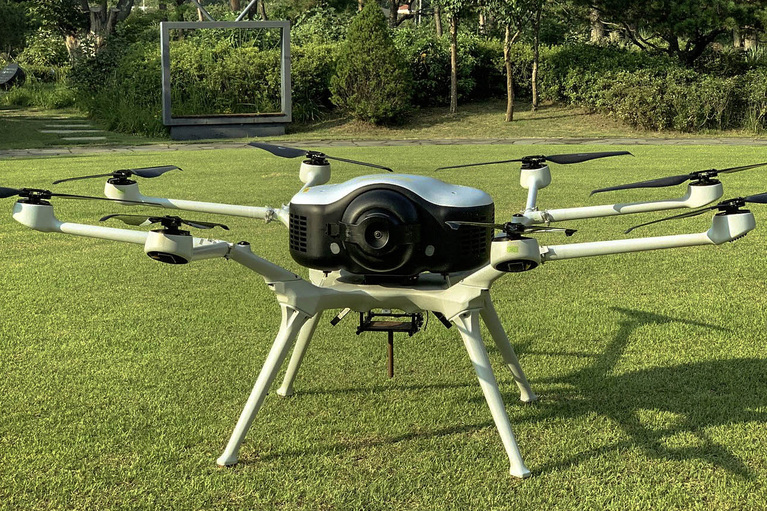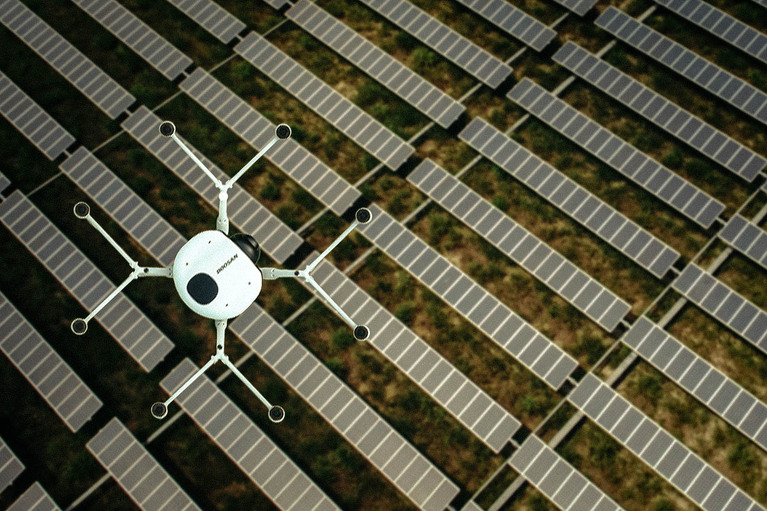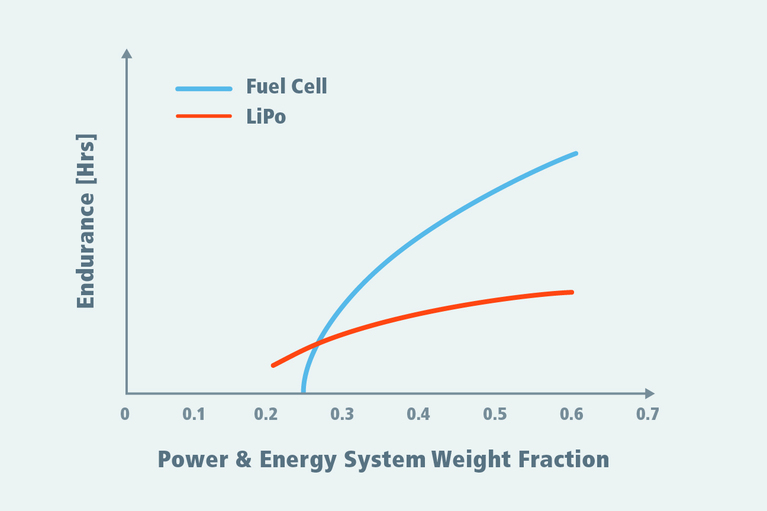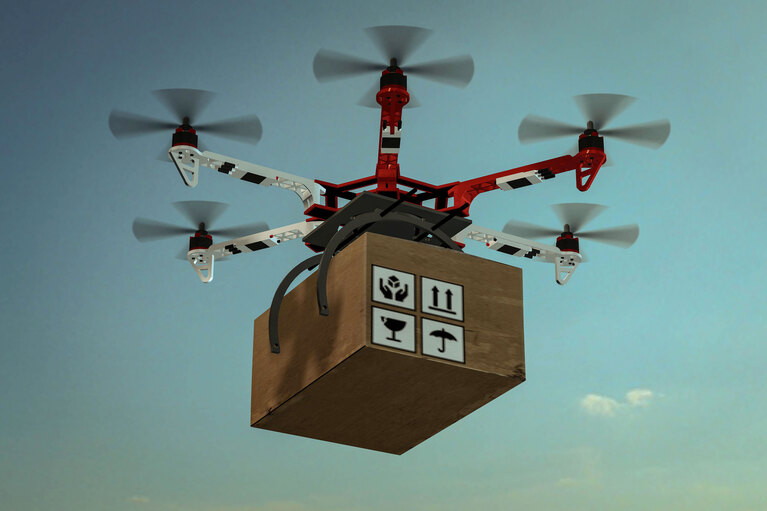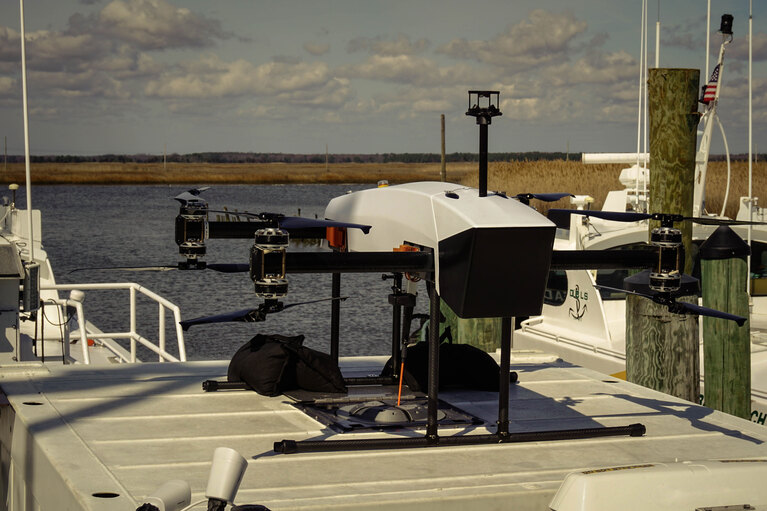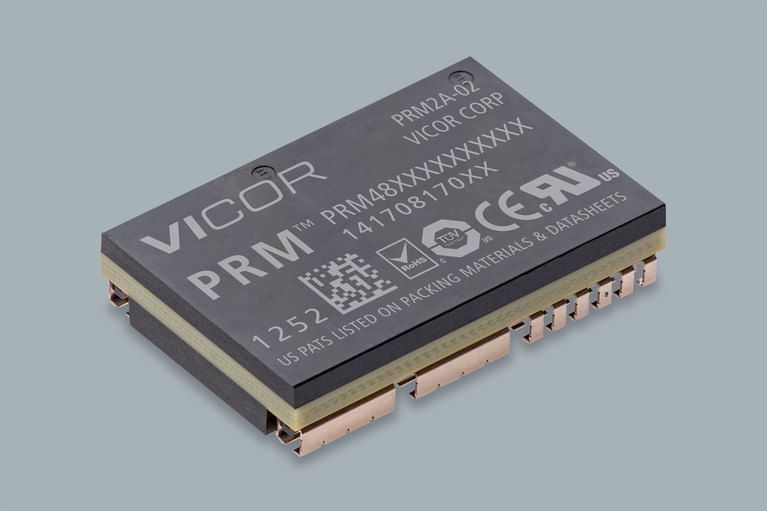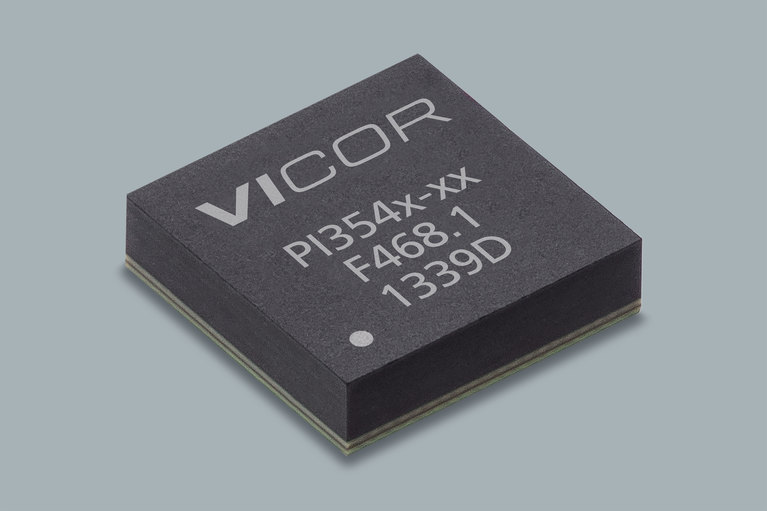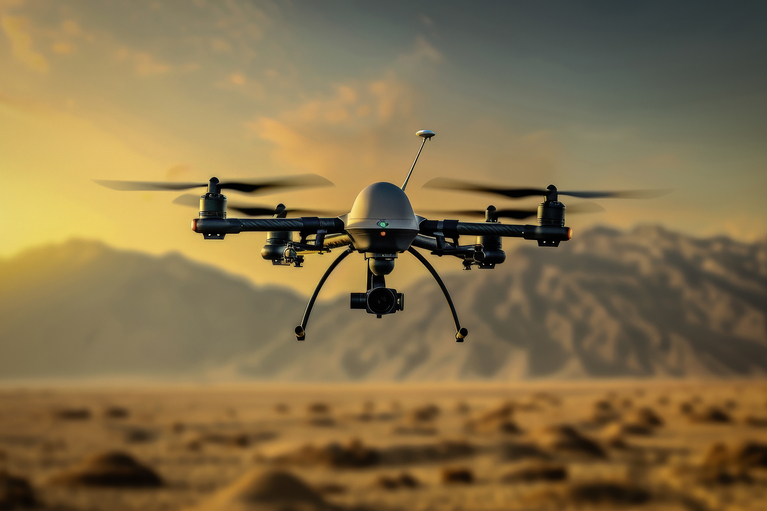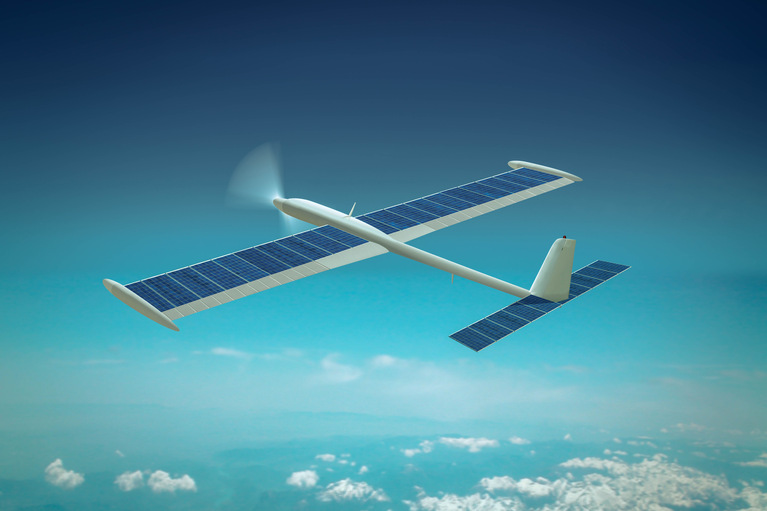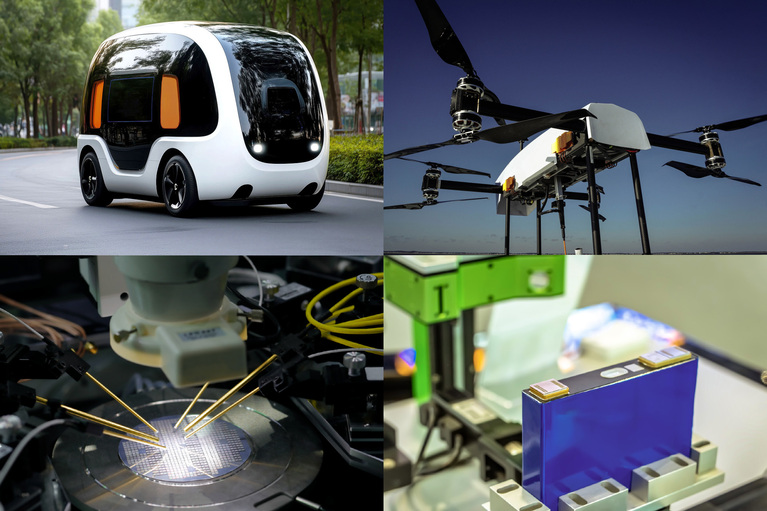
Accelerate your move to a high performance 48V power delivery network
This eBook provides guidance on designing 48V power delivery networks to enhance the performance, efficiency, and reliability of industrial products
Vicor’s power-dense modules enabled Doosan to minimize payload and maximize power.
A new breed of commercially available, long-range drones uses hydrogen fuel cells to provide the energy they need to deliver humanitarian relief to disaster victims in remote locations up to an hour's flight from their home base. The eight-motor DS30 drone, built by Doosan Mobility Innovation (DMI), is powered by a 2.6-kW fuel cell, also built by DMI.
The DS30 can fly at speeds of up to 80km/h and operate for up totwo hours between refueling when lightly loaded. Even when carrying up to 5kg worth of equipment, medical supplies, or other vital cargo, they have demonstrated range and endurance that enabled them to transport masks and emergency supplies between U.S. Virgin Islands and deliver medical AEDs to the top of Mt. Hallasan (6,388 ft.),the tallest mountain in South Korea (Figure 1).
Thanks to energy densities that are four to five times greater than what's available from today's batteries, DMI's drones can complete the inspection without refueling. In contrast, a battery-powered drone would require more than six battery replacements to accomplish the task.
Figure 1: DMI drones made long over-water flights to deliver emergency medical supplies in the Virgin Islands. A hydrogen fuel-cell power pack made this possible by enabling over two hours of UAV flight time—four times longer than most battery-powered drones.
Since their recent introduction, DMI's extended-range drones have found several other commercial applications, such as monitoring of vast solar farms–including Korea’s largest solar energy plant in Solasido, Haenam (Figure 2). Thanks to energy densities that are four to five times greater than what's available from today's batteries, DMI's drones can complete the inspection without refueling. In contrast, a battery-powered drone would require more than six battery replacements to accomplish the task.
Figure 2: Solar panel inspection is achieved with far great efficiency and speed by DMI drones. Using a hydrogen-fuel-cell drone equipped with a common camera and a thermographic camera, the image of a power plant on a site of about 20MW was obtained by just two automatic grid flights. When performing the same mission using a battery-powered drone, more than six battery replacements are required.
As we shall see, the engineering that enables the drones to accomplish these feats is almost as impressive as the lives they have saved.
While the energy density (Wh/kg) of compressed hydrogen itself is far greater than that of any lithium-based battery available today, the weight of the fuel cells needed to produce the power had made hydrogen-powered aviation difficult (Figure 3). But since DMI had been developing and manufacturing stationary fuel cells and the electro-materials that power them for many years, they felt they could use their experience to "tip the scales" in favor of hydrogen.
Figure 3: Energy density comparison: hydrogen fuel cell vs. lithium batteries.
DMI's design team recognized that creating a cost-effective hydrogen fuel cell for mobile devices would require several technological innovations. Since added weight and volume have a direct impact on a drone's performance, the design team focused on developing a very compact cell stack with the highest possible energy density.
The power pack's operation is managed by a compact controller module that automatically performs the stack's startup/shutdown sequences, as well as management, monitoring, and protection functions. It also controls a pair of cooling fans to help keep its operating temperature stable across a wide range of operating conditions.
During startup, the controller performs several processes including “purging,” which cleans out DPI's power pack also includes a removable, safety-certified, high-pressure (350 bar) 10.8-liter storage tank that can store up to 300g of hydrogen, providing energy densities that are three to four times higher than today's batteries. The carbon-composite reinforced tank can be removed and replaced in under a minute during refueling operations.
To take full advantage of their high-density fuel cell battery pack, DMI worked with Vicor to develop a power delivery network (PDN) based on Vicor’s high-performance, high-density power modules. The PDN uses a 48V bus to increase efficiency, further enabling DMI’s exceptional flight time.
The system's PDN converts the fuel cells' highly variable output voltage (40 to 74V) to tightly regulated voltages for the propulsion and fuel-cell management systems. The PDN is comprised of two separate powertrains. The first can deliver up to 12A of 48V power to the drone's rotor motors while the other provides up to 8A worth of 12V power to the stack controllerboard and its cooling fans.
To achieve the high levels of efficiency and energy density required for the PDN subsystem, DMI selected pre-regulator modulation (PRM™) buck-boost regulators and a zero-voltage-switching (ZVS) buck regulator, both manufactured by Vicor. The PRMs can accept input voltages across the fuel-cell stack's full operating range, up to its 74V open circuit voltage (OCV), while providing a tightly regulated 48V output.
In the rotor-side leg of the PDN, two PRM buck-boost regulators (PRM48AF480T400A00) are configured in parallel to supply the 12A required by the rotors (Figure 4). The PDN leg that feeds the fuel-cell controller board electronics' 12V main bus uses a lower-power PRM (PRM48AH480T200A00) followed by a ZVS buck regulator (PI3546-00-LGIZ).

Figure 4: To achieve the high levels of efficiency and energy density required for the PDN subsystem, Vicor PRM buck-boost regulators and a ZVS buck regulator were implemented. The PRMs can accept input voltages across the fuel-cell stack's full operating range, up to its 74V open circuit voltage (OCV), while providing a tightly regulated 48V output.
The power pack can also be equipped with hybrid batteries to provide the extra power needed during takeoff and landing, and to serve as a backup power system in the event of a fuel-cell malfunction. If the stack's current suddenly drops, the converter keeps its output within safe limits and prevents damage by supplementing the stack's output with the hybrid batteries. In the event of a complete stack failure, the battery can enable an emergency landing with up to three minutes of operational power.
In response to the success of the DP30 2.6kW power pack currently in production, DMI plans to expand its product line with several other units, designed to serve a wider range of applications. The family will range from the 1.5kW hydrogen-fuel-cell power pack that’s scheduled to be released next year to a unit capable of producing up to 10kW. DPI also intends to further expand its product line with a series of drones, each designed to be easily integrated with one of the new power packs. Learn more about DMI's line of drones.
This article was originally published by Electronic Design.
UAV solutions: Increasing payload capability and flight times of commercial UAVs
Case study: World’s first commercialized hydrogen fuel cell power pack for UAVs
Article: Autonomous wireless charging boosts robot fleet productivity
ZVS Buck Switching Regulator PI3546-00-LGIZ
Accelerate your move to a high performance 48V power delivery network
This eBook provides guidance on designing 48V power delivery networks to enhance the performance, efficiency, and reliability of industrial products
Build better UAVs using modular power
Power Delivery Networks (PDN) based on Vicor high performance power modules enable innovative designs for the next generation of UAV development
UAV Market Trends and Power System Seminar 2025 Taipei, Taiwan
Power modules enable top performance and innovation for today’s advanced UAVs
High-efficiency, high-density modules free up space for advanced communications and extend range
High-efficiency class of UAV depend on solar power to meet its long flight time requirements
